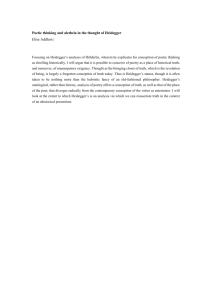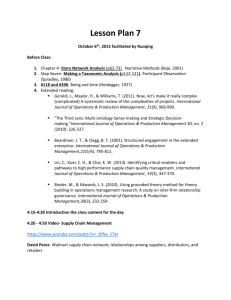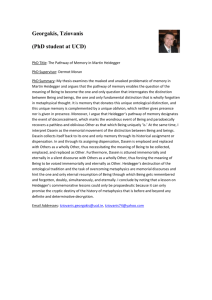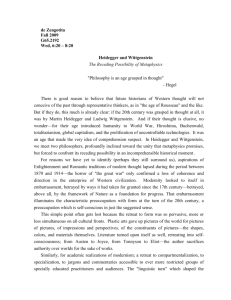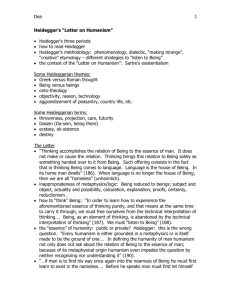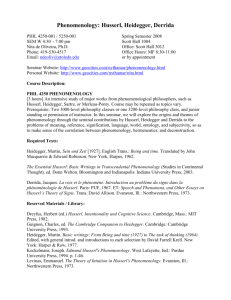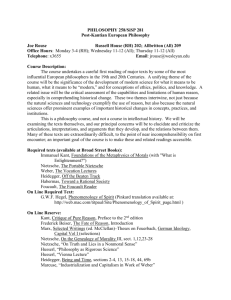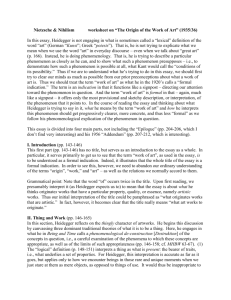Handout
advertisement
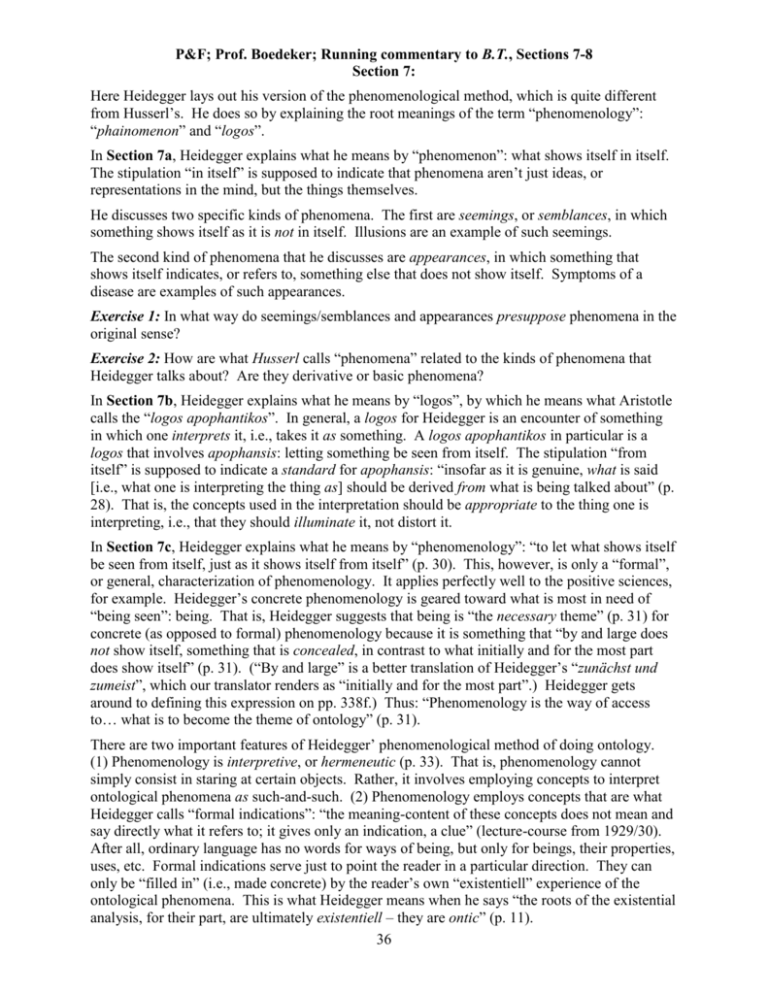
P&F; Prof. Boedeker; Running commentary to B.T., Sections 7-8 Section 7: Here Heidegger lays out his version of the phenomenological method, which is quite different from Husserl’s. He does so by explaining the root meanings of the term “phenomenology”: “phainomenon” and “logos”. In Section 7a, Heidegger explains what he means by “phenomenon”: what shows itself in itself. The stipulation “in itself” is supposed to indicate that phenomena aren’t just ideas, or representations in the mind, but the things themselves. He discusses two specific kinds of phenomena. The first are seemings, or semblances, in which something shows itself as it is not in itself. Illusions are an example of such seemings. The second kind of phenomena that he discusses are appearances, in which something that shows itself indicates, or refers to, something else that does not show itself. Symptoms of a disease are examples of such appearances. Exercise 1: In what way do seemings/semblances and appearances presuppose phenomena in the original sense? Exercise 2: How are what Husserl calls “phenomena” related to the kinds of phenomena that Heidegger talks about? Are they derivative or basic phenomena? In Section 7b, Heidegger explains what he means by “logos”, by which he means what Aristotle calls the “logos apophantikos”. In general, a logos for Heidegger is an encounter of something in which one interprets it, i.e., takes it as something. A logos apophantikos in particular is a logos that involves apophansis: letting something be seen from itself. The stipulation “from itself” is supposed to indicate a standard for apophansis: “insofar as it is genuine, what is said [i.e., what one is interpreting the thing as] should be derived from what is being talked about” (p. 28). That is, the concepts used in the interpretation should be appropriate to the thing one is interpreting, i.e., that they should illuminate it, not distort it. In Section 7c, Heidegger explains what he means by “phenomenology”: “to let what shows itself be seen from itself, just as it shows itself from itself” (p. 30). This, however, is only a “formal”, or general, characterization of phenomenology. It applies perfectly well to the positive sciences, for example. Heidegger’s concrete phenomenology is geared toward what is most in need of “being seen”: being. That is, Heidegger suggests that being is “the necessary theme” (p. 31) for concrete (as opposed to formal) phenomenology because it is something that “by and large does not show itself, something that is concealed, in contrast to what initially and for the most part does show itself” (p. 31). (“By and large” is a better translation of Heidegger’s “zunächst und zumeist”, which our translator renders as “initially and for the most part”.) Heidegger gets around to defining this expression on pp. 338f.) Thus: “Phenomenology is the way of access to… what is to become the theme of ontology” (p. 31). There are two important features of Heidegger’ phenomenological method of doing ontology. (1) Phenomenology is interpretive, or hermeneutic (p. 33). That is, phenomenology cannot simply consist in staring at certain objects. Rather, it involves employing concepts to interpret ontological phenomena as such-and-such. (2) Phenomenology employs concepts that are what Heidegger calls “formal indications”: “the meaning-content of these concepts does not mean and say directly what it refers to; it gives only an indication, a clue” (lecture-course from 1929/30). After all, ordinary language has no words for ways of being, but only for beings, their properties, uses, etc. Formal indications serve just to point the reader in a particular direction. They can only be “filled in” (i.e., made concrete) by the reader’s own “existentiell” experience of the ontological phenomena. This is what Heidegger means when he says “the roots of the existential analysis, for their part, are ultimately existentiell – they are ontic” (p. 11). 36

